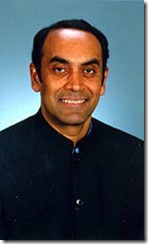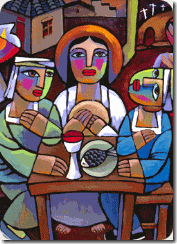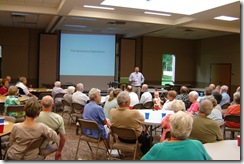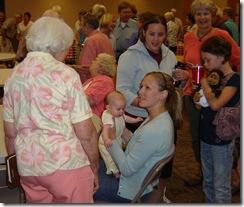Northfield friend and Lutheran Pastor Keith Homstad is a Benedictine oblate of St John’s Abbey in central Minnesota:
An Oblate is a lay or clerical, single or married, person formally associated to a particular monastery. Oblates seek to live life in harmony with the spirit of Saint Benedict as revealed in the Rule of Saint Benedict and its contemporary expression. Oblates are invited to come to Saint John’s for the Annual Oblate Retreat in July and the Days of Recollection offered in Advent and Lent, but they are welcome to visit us at any time.
Keith and I recently spent a day at St John’s, along with my daughter Karin, that concluded with evening prayer with the monastic community in the resplendent Abbey Church. We prayed and sang five psalms as part of the cycle in which 150 psalms are prayed monthly. We also visited our familiar haunts at this progressive Catholic Abbey and University, including the School of Theology where I studied in the early ‘90s and Keith at the end of the ‘90s, the Great Hall, Alcuin Library, and Sexton Commons.
The St John’s Bible, a project a decade in the making, is nearing completion, and we toured the exhibit.
In 1998, Saint John’s Abbey and University commissioned renowned calligrapher Donald Jackson to produce a hand-written, hand-illuminated Bible … a work of art that unites an ancient Benedictine tradition with the technology and vision of today, illuminating the Word of God for a new millennium.
Copies of the Gospels from the St John’s Bible were loaned to the ELCA for use at the recent 2009 Churchwide assembly. These were used for the reading of the Gospel as part of daily worship and at the concluding Service of the Word across the street at Central Lutheran church. In a stirring processional, the magnificent book was brought up the aisle at Central Lutheran and placed prominently in front of the altar for the service. Blogger Kristen Swenson recently offered a brief post about the St John’s Bible.
St John’s Abbey was the setting for Kathleen Norris’ popular book, The Cloister Walk, which is described by Publisher’s Weekly as follows:
The allure of the monastic life baffles most lay people, but in her second book, Norris goes far in explaining it. The author, raised Protestant, has been a Benedictine oblate, or lay associate, for 10 years, and has lived at a Benedictine monastery in Minnesota for two. Here, she compresses these years of experience into the diary of one liturgical year, offering observations on subjects ranging from celibacy to dealing with emotions to Christmas music. Like the liturgy she loves, this meandering, often repetitive book is perhaps best approached through the lectio divina practiced by the Benedictines, in which one tries to “surrender to whatever word or phrase captures the attention.” There is a certain nervous facility to some of Norris’s jabs at academics, and she is sometimes sanctimonious. But there is no doubting her conviction, exemplified in her defense of the much-maligned Catholic “virgin martyrs,” whose relevance and heroism she wants to redeem for feminists. What emerges, finally, is an affecting portrait of one of the most vibrant since Thomas Merton of the misunderstood, often invisible world of monastics, as seen by a restless, generous intelligence.
I regularly follow the blog of Carl McColman, THE WEBSITE OF UNKNOWING, which is “all about Christian mysticism, Celtic wisdom, interfaith spirituality, the emergent conversation, and assorted other topics.” He recently explored the attraction to lay monasticism in a blog post entitled “Cloister of the Heart.” Check it out.
Lay Cistercians, incidentally, are like Benedictine Oblates, Secular Franciscans, or Third Order Carmelites: people who are not called to the consecrated religious life, but who are nonetheless drawn to it. As its name implies, Lay Cistercians are laypeople, most of us married with ordinary jobs and lives “in the world,” who nevertheless find that the culture and spirituality of monasticism has a real and significant role to play in our ongoing formation as Christians. We are not “monk wanna-bes” so much as we function as a kind of ambassador or translator, who interfaces with both the monastic community and the world at large, drinking deeply from the monastic well as a way to nourish the good life we have been called to live, outside the monastic cloister.
Keith and I plan to return to St John’s next week to hear progressive Catholic author and activist Sister Joan Chittister speak.





